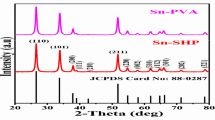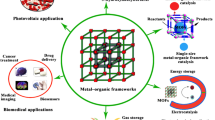Abstract
Novel metal-free catalysts were synthesized form maleic acid (MA) and citric acid (CA) based polymers for hydrogen generation form NaBH4. Surfactant-free-self-emulsion polymerization technique was used to synthesize poly(Maleic acid)(poly(MA)), poly(Citric acid)(poly(CA)) and poly(Maleic acid-co-Citric Acid) poly(MA-co-CA)) polymeric micro-particles in a single step. The prepared catalysts were characterized by zeta potential, SEM, FTIR and TGA. The hydrodynamic diameter of the poly(MA), poly(CA) and poly(MA-co-CA) micro-particles were found to be 0.681, 1.273, 1.604 µm and the zeta potential of this micro-particles were found to be −6.90, −5.69 and −7.73 mV, respectively. Various parameters affecting the rate of H2 production of polymeric catalysts, such as the amount of microparticles, the amount of NaBH4 and the ambient temperature were investigated. Hydrogen generation rate(HGR) was calculated as 84 ± 44 ml H2 g−1 min−1 for 50 mg poly(MA-co-CA)micro-particles in the hydrolysis of 50 mM NaBH4. The activation energy(Ea) of hydrolysis of NaBH4 catalyzed by poly(MA-co-CA)micro-particles was calculated as −1.66 ± 0.76 kJ mol−1, which is much lower than similar studies reported in the literature. The prepared poly(CA), poly(MA) and poly(MA-co-CA) micro-particles were shown to be very effective catalysts in H2 generation by hydrolysis of NaBH4.








Similar content being viewed by others
References
Goudon JP, Bernard F, Renouard J, Yvart P (2010) Experimental investigation on lithium borohydride hydrolysis. Int J Hydrogen Energy 35:5
Parviz, R. (2013) Nanostructured complex light metal hydrides based on Li, Na, B, N and Al for solid state hydrogen storage. In Mechanical Engineering, p 199, University of Waterloo, ON.
Chinnappan A, Puguan JMC, Chung W-J, Kim H (2015) Hydrogen generation from the hydrolysis of sodium borohydride using chemically modified multiwalled carbon nanotubes with pyridinium based ionic liquid and decorated with highly dispersed Mn nanoparticles. J Power Sources 293:7
Metin Ö, Özkar S (2009) Hydrogen generation from the hydrolysis of ammonia-borane and sodium borohydride using water-soluble polymer-stabilized cobalt(0) nanoclusters catalyst. Energy Fuels 23:9
Lu L, Zhang H, Zhang S, Li F (2015) A family of high-efficiency hydrogen-generation catalysts based on ammonium species. Angew Chem Int Ed 54:9328–9332
Wu C, Zhang H, Yi B (2004) Hydrogen generation from catalytic hydrolysis of sodium borohydride for proton exchange membrane fuel cells. Catal Today 93–95:477–483
Komova OV, Simagina VI, Kosova NV, Netskina OV, Odegova GV, Samoilenko TY, Devyatkina ET, Ishchenko AV (2007) LiCoO2-supported catalysts for hydrogen generation from sodium borohydride solution. Chem Sustainable Dev 15:6
Joshi SY, Kumar A, Luo J, Kamasamudram K, Currier NW, Yezerets A (2018) New insights into the mechanism of NH3-SCR over Cu- and Fe-zeolite catalyst: apparent negative activation energy at high temperature and catalyst unit design consequences. Appl Catal B 226:9
Su C-C, Lu M-C, Wang S-L, Huang Y-H (2012) Ruthenium immobilized on Al2O3 pellets as a catalyst for hydrogen generation from hydrolysis and methanolysis of sodium borohydride. RSC Adv 2(5):2073
Wang ZL, Yan JM, Wang HL, Ping Y, Jiang Q (2012) Pd/C synthesized with citric acid: an efficient catalyst for hydrogen generation from formic acid/sodium formate. Sci Rep 2:598
Kim HJ, Shin K-J, Kim H-J, Han MK, Kim H, Shul Y-G, Jung KT (2010) Hydrogen generation from aqueous acid-catalyzed hydrolysis of sodium borohydride. Int J Hydrogen Energy 35:6
Alpaslan D, Erşen Dudu T, Kubilay Ş, Aktaş N (2020) Synthesis and characterization of biocompatible poly(maleic acid-co-citric acid) microparticles as a smart carrier for thiamine. Polym Bull 78:6305–6320
Mohanty S, Das B, Dhara S (2013) Poly(maleic acid)—a novel dispersant for aqueous alumina slurry. J Asian Ceram Soc 1:184–190
Shinohara S, Eom N, Teh EJ, Tamada K, Parsons D, Craig VSJ (2018) The role of citric acid in the stabilization of nanoparticles and colloidal particles in the environment: measurement of surface forces between hafnium oxide surfaces in the presence of citric acid. Langm 34:2595–2605
Alpaslan D, Dudu TE, Aktaş N (2018) Synthesis, characterization and modification of novel food packaging material from dimethyl acrylamide/gelatin and purple cabbage extract. Manas J Eng 6:15–33
Dudu TE, Alpaslan D, Uzun Y, Aktas N (2017) Utilization of hydrogel-fungus composites as absorbents for removal of textile dyes from aqueous media. Int J Environ Res 11:557–568
Moon GY, Lee SS, Yang GR, Song KH (2010) Effects of organic acid catalysts on the hydrogen generation from NaBH4. Korean J Chem Eng 27:5
Murugesan S, Subramanian VR (2009) Effects of acid accelerators on hydrogen generation from solid sodium borohydride using small scale devices. J Power Sources 187:7
Wei J (1996) Adsorption and cracking of n-alkanes over ZSM-5: negative activation energy of reaction. Chem Eng Sci 51:2995–2999
Lii R-R, Gorse RA, Myran CS, Gordon S (1979) Negative activation energy for the self-reaction of hydroperoxyl radical in the gas phase. Dimerization of hydroperoxyl radical. J Phys Chem 83:1803–1804
Revell LE, Williamson BE (2013) Why are some reactions slower at higher temperatures? J Chem Educ 90:1024–1027
Shimomura T, Tolle KJ, Smid J, Szwarc M (1966) Energy and entropy of activation of propagation by the free polystyryl anions and their ion pairs. the phenomenon of “negative” activation energy. J Am Chem Soc 89:796–803
Vyazovkin S (2016) A time to search: finding the meaning of variable activation energy. Phys Chem Chem Phys 18:18643–18656
Joshi SY, Kumar A, Luo J, Kamasamudram K, Currier NW, Yezerets A (2018) New insights into the mechanism of NH 3 -SCR over Cu- and Fe-zeolite catalyst: apparent negative activation energy at high temperature and catalyst unit design consequences. Appl Catal B 226:565–574
Sahiner N, Yasar AO, Aktas N (2016) An alternative to metal catalysts: poly(4-vinyl pyridine)-based polymeric ionic liquid catalyst for H2 generation from hydrolysis and methanolysis of NaBH4. Int J Hydrogen Energy 41:10
Sahiner N, Yasar AO, Aktas N (2017) Metal-free pyridinium-based polymeric ionic liquids as catalyst for H2 generation from NaBH4. Renewable Energy 101:7
Balbay A, Şahin Om (2014) Hydrogen production from sodium borohydride in boric acid-water mixtures. Energy Sourc Part A 36:8
Funding
The authors have not disclosed any funding.
Author information
Authors and Affiliations
Corresponding author
Ethics declarations
Conflict of Interest
The authors have not disclosed any competing interests.
Additional information
Publisher's Note
Springer Nature remains neutral with regard to jurisdictional claims in published maps and institutional affiliations.
Rights and permissions
About this article
Cite this article
Alpaslan, D., Ersen Dudu, T. & Aktas, N. Non-Metal Polymeric Bioparticles Based on Maleic Acid/Citric Acid as a Catalyst for H2 Generation from NaBH4. J Polym Environ 30, 3656–3664 (2022). https://doi.org/10.1007/s10924-022-02461-x
Accepted:
Published:
Issue Date:
DOI: https://doi.org/10.1007/s10924-022-02461-x




